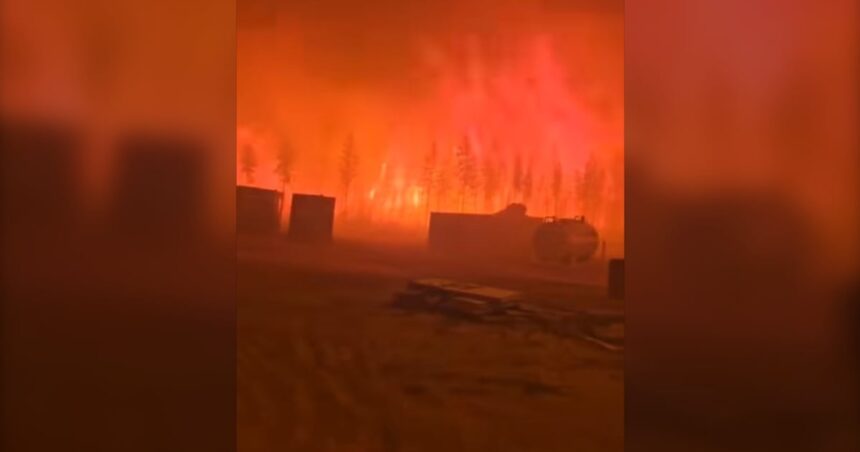Last week’s harrowing escape of six construction workers who took shelter in a shipping container as wildfires suddenly engulfed their northern Ontario worksite offers a stark reminder of climate change’s accelerating impact on Canada’s infrastructure projects.
The workers were completing a highway expansion project near Kenora when rapidly shifting winds drove a nearby forest fire directly toward their construction site. With evacuation routes cut off, they made the split-second decision to shelter inside a metal shipping container used for storing equipment.
“We had maybe ten minutes warning,” said Raj Patel, crew foreman with Northern Development Construction. “The smoke turned the day to night, and we could feel the heat through our work boots. That container was our only option.”
For nearly six hours, the workers huddled inside as temperatures soared above 40°C inside the metal box. They used wet cloths over their faces and rationed their limited water supplies while flames surrounded the site. Emergency services couldn’t reach them until a brief shift in wind patterns created a narrow access corridor.
This incident represents the third major workforce emergency related to wildfires in Ontario this season alone. According to Environment Canada data, the province has already experienced a 28% increase in wildfire activity compared to this time last year, with the fire season starting nearly three weeks earlier than the previous five-year average.
The Ontario Ministry of Labour is now reviewing safety protocols for construction sites in wildfire-prone regions. Minister Patricia Gagnon told reporters yesterday, “The changing climate means we need to reassess how we prepare workers for these emergencies. The old playbooks simply don’t account for the speed and intensity of today’s fire behavior.”
Climate scientists at the University of Toronto have documented how Canada’s warming rate—approximately twice the global average—is creating longer, more intense fire seasons. Dr. Amelia Chen, who studies climate impacts on infrastructure development, points to a troubling trend.
“What we’re seeing is that construction timelines developed even five years ago don’t account for the expanded fire risk periods we’re experiencing now,” Chen explained. “Projects planned for ‘safe’ seasons are increasingly vulnerable to extreme weather events.”
The construction workers’ ordeal has sparked renewed calls from industry leaders for comprehensive climate emergency training. The Canadian Construction Association recently published guidance suggesting all remote worksites maintain emergency shelter provisions with filtration systems, communication redundancies, and heat-reflective materials.
For the rescued workers, the experience has left lasting impressions. “I’ve worked construction for sixteen years and never imagined being trapped like that,” said Sarah Whitehorse, an equipment operator who was among those rescued. “Now I check fire reports like I check the weather, and our crew has our own emergency protocols regardless of what management requires.”
The incident near Kenora underscores a growing reality for Canadian infrastructure development: climate adaptation isn’t just about building resilient structures, but also protecting the workers constructing them. As Ontario’s northern regions continue ambitious development plans, including the expansion of Highway 17 and critical resource extraction projects, worker safety in changing environmental conditions requires urgent attention.
Provincial officials have promised a comprehensive review of construction safety protocols in wildfire zones, with updated regulations expected by early fall. Until then, many crews are implementing their own enhanced safety measures—including dedicated fire watchers, improved communication systems, and regular evacuation drills.
For Patel and his crew, returning to work means bringing a new perspective to job site safety. “We keep our shipping container stocked with emergency supplies now,” he said. “And we’ve mapped out multiple escape routes for every project site. What seemed like over-preparation before now just feels like common sense.”
As climate scientists project increasingly volatile fire seasons for the coming decades, these adaptations may become standard practice across Canada’s construction industry—a necessary evolution in a rapidly changing environment.






